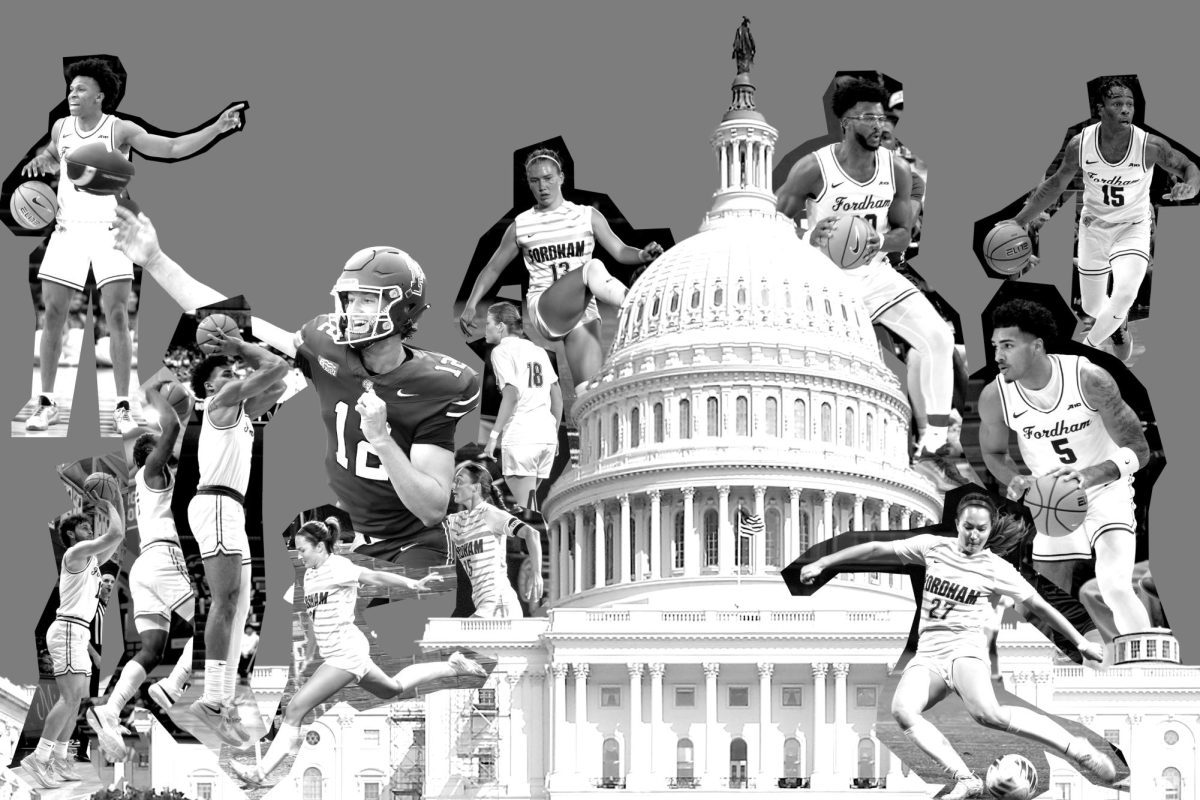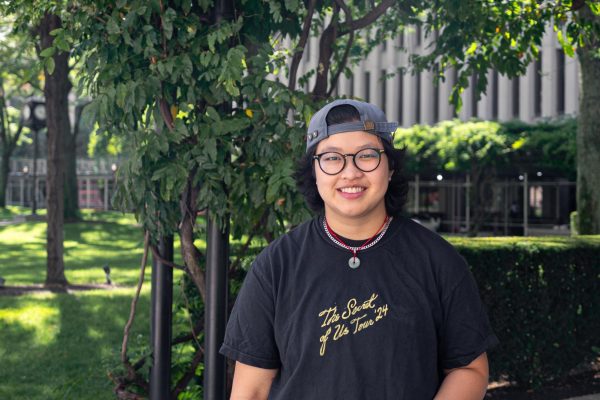On June 6, college sports departments all around the United States were alerted to a decision that would transform the future of name, image and likeness (NIL) in collegiate athletics. Judge Claudia Wilken of the United States District Court for the Northern District of California approved the House v. NCAA settlement, a landmark decision that ended decades of strict amateurism rules and allowed universities to directly compensate athletes.
The numbers alone are staggering: a $2.576 billion settlement, spread across 10 years, split between NIL claims and other compensation. But beyond the money, the decision forces universities — from SEC powerhouses to smaller Division I colleges like Fordham — to confront a new question: Are student-athletes primarily competitors chasing a career in sports, or are they entrepreneurs managing a brand from the moment they step on campus?
Not only will former athletes be compensated for the years they were barred from NIL opportunities, but schools can now pay their athletes directly.
For over a century, the NCAA’s rules drew a clear line: Student-athletes could receive scholarships and stipends, but not direct pay from their schools. That model changed in 2021, when NIL rights were first recognized, allowing athletes to profit from endorsements and social media deals. The House v. NCAA ruling blew the doors wide open. Not only will former athletes be compensated for the years they were barred from NIL opportunities, but schools can now pay their athletes directly.
At Fordham, that shift took shape in September when the university announced the hiring of Danny Enjamio as its first general manager for NIL licensing. His position, created specifically in response to the new environment, will oversee all NIL-related activities for student-athletes, using the platform Opendorse as a central tool.
Enjamio brings a hybrid background: law school at the University of Florida, litigation experience at Carlton Fields and a stint on the basketball operations staff at George Washington University. That combination of legal and athletic knowledge makes him uniquely suited to guide Fordham athletes through contracts, compliance and marketing opportunities.
In practice, his job will involve everything from ensuring athletes understand endorsement agreements to helping them explore ways to connect with businesses and brands. In a city like New York, where the competition for visibility is intense but the opportunities are vast, his role could be transformative.
“Atlantic 10 schools would need to begin taking part in revenue sharing and NIL to compete.” Jay Paterno, Author
Jay Paterno, former NCAA Division I football coach, former recruiting coordinator, author and speaker commented on a financial strain possibly facing smaller Division I schools such as Fordham.
“Even the highest-revenue (Division I) schools will have to find ways to fund the revenue sharing and the NIL settlement money and new scholarships if the limits are lifted. Non-Power-4 (Division I) schools will have to look at cost efficiencies and have to prioritize certain sports,” Paterno said. “Atlantic 10 schools would need to begin taking part in revenue sharing and NIL to compete.”
Paterno’s comments explicitly convey that the settlement marks the end of college sports as amateur and begins its journey towards a more serious, professional athlete program.
While administrative hires and billion-dollar settlements make headlines, the real impact is felt in locker rooms and classrooms. Vinny Rugai, Fordham College at Rose Hill ’27, is a running back on the football team studying finance. He has yet to see the impact of the settlement in his day-to-day life.
“Honestly, no, I’m not noticing any changes on our team,” Rugai said. “Our guys are a good group of guys. We do have one of the bigger teams here with over 100 guys, but I’ve not noticed any changes.”
Rugai also noted that while Fordham has a new athletic director this year, the House settlement has not altered much within the athletic department so far.
Football is often singled out as the biggest benefactor of NIL because of its revenue-generating power. But Rugai was quick to point out the differences between levels of college football.
“Yes, football teams are the biggest benefactors due to revenue sharing,” he said. “At the FCS level, which we are in, that trickles down less compared to the bigger FBS schools, where there’s just more money involved in those programs.”
For athletes in Rugai’s position, NIL may not mean seven-figure shoe deals, but it could still help cover living expenses, build connections and provide real-world experience. And for a finance student, the overlap between classroom knowledge and business opportunities could be especially valuable.
“I definitely think there is an opportunity for athletes to act as entrepreneurs,” he said. “You can market yourself as a brand, put yourself out there to different companies … and create leverage for yourself to make money.”
Rugai understands that change will be instituted progressively, both in college athletics and at Fordham.
“The house itself will continue to oversee the process, and maybe even create more laws to just regulate even more. We saw it like this week that they just made it so the transfer portal window in the spring closes,” he said.
The question — “career or brand?” — continues to linger. For some athletes, especially those in Power Five conferences, NIL may be a stepping stone to professional sports. But for many, including Patriot League players, the chance to develop a personal brand could outlast their athletic careers. However, Rugai continues to worry about the life-altering decisions that young athletes will be making.
Whether college sports are now more of a career or a brand may depend on the individual athlete.
“These are 18 to 23-year-olds. Obviously, they’re adults, but they shouldn’t be making decisions … just based on a couple hundred thousand or maybe a million dollars,” Rugai said. “You go to school to learn and create a base for the next four years.”
Whether college sports are now more of a career or a brand may depend on the individual athlete. But what is clear is that the change is incoming; as new students commit to Fordham and sponsorship opportunities increase, a bright future awaits the next generation of student-athletes who will need to balance ambition, academics and entrepreneurship in ways no previous generation has.
“I don’t expect this to be the last thing they pass. I expect them to keep a close eye and regulate even more,” Rugai said.
In this new world, a football game is never just a game. It’s also a showcase, a platform and perhaps even a brand-building opportunity. For Fordham and its athletes, the challenge will be turning that opportunity into something lasting — on the field, in the classroom and beyond.


